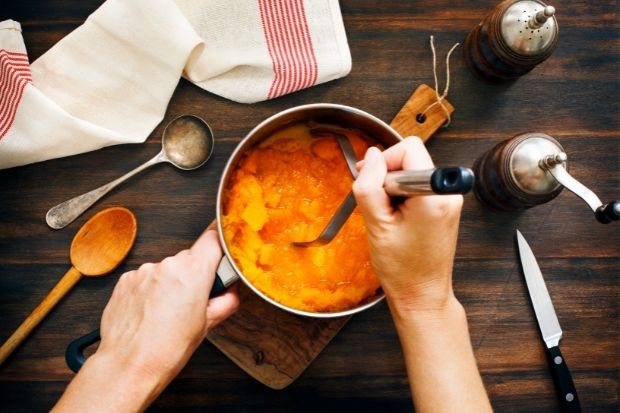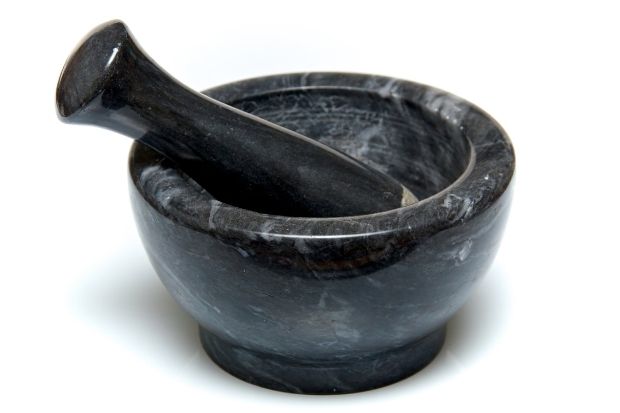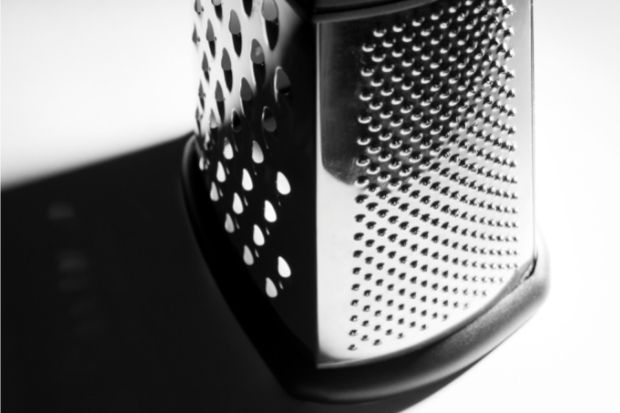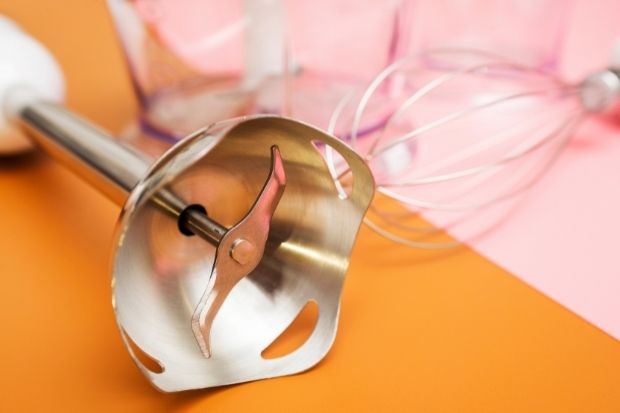When you purée something, you get a very smooth food product, such as a smooth paste, that you can drink or add to other foods. Puréeing is usually done in a blender, but what if your blender is broken, or you simply don’t have one?
You can learn how to purée without a blender by becoming familiar with other methods for puréeing foods, which include using a food processor or food mill, mortar and pestle, cheese grater, rolling pin, or even a fork. In fact, there are numerous ways to purée your food without using a common kitchen blender and they’re a lot easier than you might think.

11 Ways To Purée Without a Blender
Fruits and vegetables are often puréed, but there are other foods that can be puréed as well, including some meats. If the foods you’re puréeing have a lot of water in them, they can be puréed as they are, but foods without high water content should be puréed with some water to make the process easier. Below are a few items you can use in place of an expensive blender when you want to purée something:
Immersion Blender

This is a blender that you hold in your hand. It often comes with numerous accessories and is usually lightweight. Immersion blenders are great for puréeing or mashing all types of soft foods, so they are very versatile devices. One of the accessories that often comes with an immersion blender is a food masher, which you can use to purée your foods.
Food Processor
Food processors are great substitutes for using a blender to purée foods because they usually have many settings. In fact, many food processors have a purée setting, which makes puréeing any item very simple. Even an inexpensive, typical food processor is able to purée foods easily, and you can get a very smooth purée from this amazing kitchen appliance.
Food Mill
Food mills are also called food sieves and consist of a hand crank that purées the food and a bowl that the food falls into after it’s puréed. Perfect for making foods such as applesauce and tomato sauce, they usually come with different plates that allow you to do all sorts of things. They can be used on cooked meat, but not on raw meat. Foods should be soft before you use a food mill on them, which means you may have to cook them before using the device.
Fine Mesh Sieve
Sieves, or sifters, come in various sizes and with various hole sizes. The smaller the holes, the finer you can purée your foods. If puréeing is what you wish to do, look for a sieve that is large enough so that you can purée large amounts of food at one time. Simply put soft pieces of food inside the sieve, then mash them through the sieve with a spoon or spatula. Also, make sure there is something underneath to catch the foods you’re puréeing.
Mortar and Pestle

A good mortar and pestle will purée your foods, but keep in mind that this is a manual device that you have to operate by hand. They usually come in a set and are very good at mashing and puréeing food, but depending on the foods you start out with, it may take a while to get them as thin and smooth as you need them to be. Sometimes your hands will be a little sore when you’re done, but it shouldn’t be too painful!
Potato Masher
Potato mashers are easy to use and very effective at puréeing foods. The good thing about a potato masher is its size. Simply put, you can mash up a lot of food items at one time because these mashers are so large. They also come in many different sizes, so you can use the size you need according to the size of the food items you’re trying to purée.
Chef’s Knife
Puréeing food with a knife takes some practice, but it works. First, dice the food as finely as you can, since this makes the process a lot easier. Then press the flat side of the knife into the foods at a slight angle. In other words, you’ll want to angle it down somewhat instead of placing it flat against the foods. Twist the knife back and forth to make it a little easier on yourself.
Fork
We all have forks in our kitchen, and if the food is soft enough, you can use one to purée it into the texture you want. For bigger chunks of food, simply use a bigger fork. Keep mashing with the fork until the foods achieve the desired consistency. It might take some time to purée something with a fork, but it’s not impossible.
Cheese Grater

If you use a cheese grater to purée your foods, make sure you use only soft foods, because graters won’t work on hard foods. For hard foods, you might have to use a vegetable peeler to peel the foods, then boil them for a while until they get soft. Afterwards, simply grate the foods just like you would anything else, but make sure you have a bowl underneath the grater to catch the puréed foods.
Chinois Strainer
This is a cone-shaped device that works a lot like a food mill except that you have to push the food through. To do this, you can use a silicone spatula or some other flat device. The strainer is perforated and usually has small holes, which prevents seeds from getting into your puréed food.
Rolling Pin
This is a novel idea that most people are unfamiliar with, but a rolling pin can indeed purée your food. You might want to cover the foods first with a thin piece of muslin or cheesecloth, then you can roll the pin over the foods until they achieve the consistency you want. Rolling pins are good at puréeing all types of foods.
